In today's rapidly evolving technological landscape, data centers play a critical role in the smooth operation of businesses. However, the increasing prevalence of unforeseen disasters, both natural and man-made, poses a significant threat to the uninterrupted functioning of these data centers.
This is where disaster recovery solutions come into play. By implementing robust and efficient disaster recovery strategies, organizations can ensure the availability and integrity of their data, minimize downtime, and safeguard their business operations.
In this discussion, we will explore the various disaster recovery solutions for data centers, including hardware-based solutions, virtualized disaster recovery, and cloud-based options like Disaster Recovery as a Service (DRaaS). We will delve into the importance of data center disaster recovery, assess different disaster recovery options, and provide essential steps for building an effective disaster recovery strategy.
So, let's embark on this journey to discover how organizations can fortify their data centers against potential disasters and ensure business continuity in the face of adversity.
Key Takeaways
- Hardware-based disaster recovery solutions are essential for minimizing downtime and data loss in data centers.
- Regular testing and updating of the recovery plan is crucial for identifying strengths and weaknesses and ensuring alignment with business needs.
- Backup and replication techniques, including duplicate copies of data and synchronized copies for availability, are fundamental components of a comprehensive disaster recovery strategy.
- Virtualization technology and cloud-based solutions offer faster recovery times, increased availability, enhanced data protection, and cost-effectiveness for data center disaster recovery.
Hardware-Based Disaster Recovery Solutions
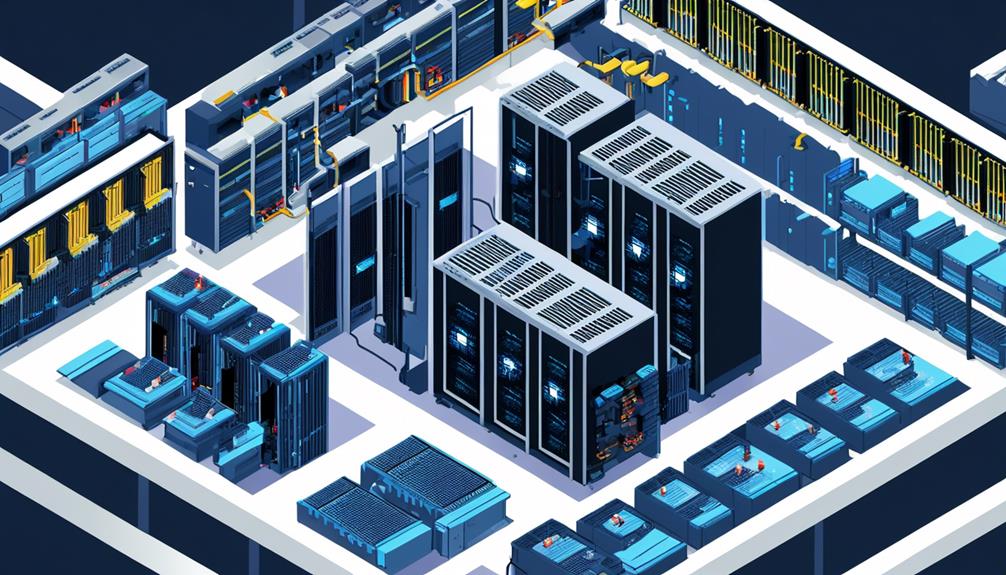
Hardware-based disaster recovery solutions involve the use of physical devices and infrastructure to ensure the resilience and continuity of data centers during and after a disaster. These solutions are designed to minimize downtime and data loss by implementing redundant hardware components, such as servers, storage arrays, and networking equipment.
By leveraging hardware redundancy and failover mechanisms, hardware-based disaster recovery solutions can rapidly restore critical systems and applications in the event of a disaster. This ensures that data centers can maintain their operations and continue serving their customers without experiencing significant disruptions.
One of the key advantages of hardware-based solutions is their ability to provide high levels of reliability and performance. With redundant hardware components, data centers can withstand the failure of individual devices without impacting their overall operations. This redundancy also allows for seamless failover to backup systems, ensuring that critical services remain available even during a disaster.
Implementing hardware-based disaster recovery solutions requires careful planning and investment in robust and resilient infrastructure. Data centers need to assess their current hardware capabilities and identify any potential single points of failure. By investing in redundant hardware components and implementing failover mechanisms, data centers can enhance their overall disaster preparedness and minimize the impact of any potential disasters.
Importance of Data Center Disaster Recovery
A robust and well-executed data center disaster recovery plan is crucial for ensuring the continuity of operations and minimizing disruptions in the event of a disaster. With the increasing reliance on data and the critical role it plays in modern business operations, the importance of data center disaster recovery cannot be overstated.
Here are some key reasons why data center disaster recovery is of utmost importance:
- Protection of Business: A data center disaster recovery plan safeguards the organization's ability to restart regular operations and protect critical business functions. By having a comprehensive recovery plan in place, businesses can minimize the financial and reputational impacts of a disaster, ensuring their long-term viability.
- Prevention of Data Loss: Data is the lifeblood of any organization. A well-executed data center disaster recovery plan ensures the preservation of important data and prevents its loss. This is especially crucial in industries that deal with sensitive customer information or have legal and regulatory obligations to protect data.
To achieve these objectives, organizations need to consider the following:
- Disaster Recovery Team: Establishing a dedicated disaster recovery team is essential for efficient response and recovery. This team should include individuals with the necessary expertise and resources to handle the various aspects of disaster recovery.
- Regular Testing and Updating: Testing the disaster recovery plan through risk assessments and tabletop exercises is vital. This helps identify strengths and weaknesses, allowing organizations to refine their recovery strategies and ensure efficient recovery in a real disaster scenario.
Assessing Disaster Recovery Options
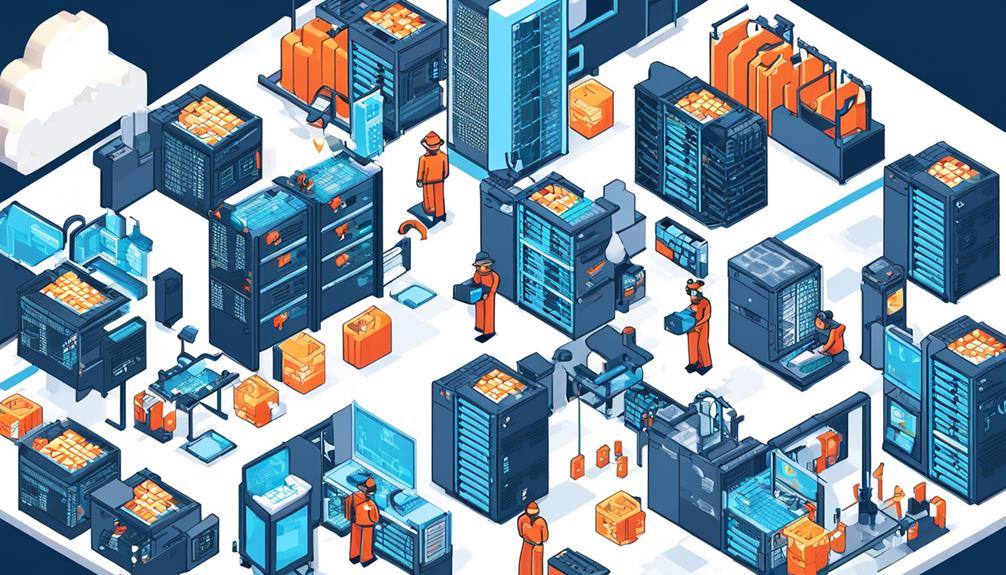
Assessing disaster recovery options involves considering key factors such as:
- Recovery Time Objectives (RTO): The Recovery Time Objective determines the maximum acceptable downtime.
- Backup and Replication: Backup and Replication techniques ensure data availability and redundancy.
- Testing and Maintenance: Regular testing and maintenance of the disaster recovery plan are vital to verify its effectiveness and address any vulnerabilities.
Recovery Time Objectives
Recovery Time Objectives (RTO) play a critical role in determining the maximum acceptable downtime for restoring data center operations after a disaster. It is essential to assess and implement disaster recovery solutions tailored to the specific needs of your data center facility to achieve quicker recovery and increased availability.
When considering your RTO, it is important to consider the impact of downtime and data loss on your organization. This can determine the RTO and Recovery Point Objective (RPO) based on business needs and priorities.
Regularly assessing and updating your disaster recovery plan, as well as conducting tabletop exercises, can help uncover strengths and weaknesses in your strategy. It is also crucial to ensure that your disaster recovery plan aligns with your RTO and RPO objectives, especially for your primary data center.
Backup and Replication
Backup and replication are fundamental components of a comprehensive disaster recovery strategy. They ensure the integrity and availability of critical data and applications in data center disaster recovery.
Backup solutions involve creating duplicate copies of data to protect against data loss. These copies can be stored on-site or off-site, using technologies like tape drives, disk-based backup, or cloud storage.
Replication solutions, on the other hand, involve creating and maintaining synchronized copies of data to ensure availability and continuity. This is achieved by replicating data in real-time or at scheduled intervals to secondary storage systems or remote locations.
When assessing disaster recovery options, organizations need to consider their Recovery Point Objective (RPO). The RPO defines the acceptable amount of data loss in case of a disaster.
Backup and replication play critical roles in meeting this RPO. They provide multiple copies of data that can be quickly restored in the event of a disaster.
Testing and Maintenance
Regularly evaluating and updating your disaster recovery plan is crucial to maintain its effectiveness and alignment with your business needs. Testing your plan through tabletop exercises helps identify strengths and weaknesses in your strategy. By conducting simulated emergency discussions, you can avoid testing your plan for the first time during a real emergency.
Tools like AKCPro Server can be utilized to create a digital twin of your data center facility and run through failure scenarios without affecting live operations. It is also important to ensure adequate insurance coverage for infrastructure and business continuity to minimize disruptions and protect your business.
Additionally, conducting a business impact analysis can help determine the recovery time objective (RTO) for different systems, allowing you to prioritize your recovery efforts effectively.
Regular testing and maintenance of your disaster recovery plan are essential to ensure its readiness in the face of potential disasters.
Data Center Disaster Recovery Planning
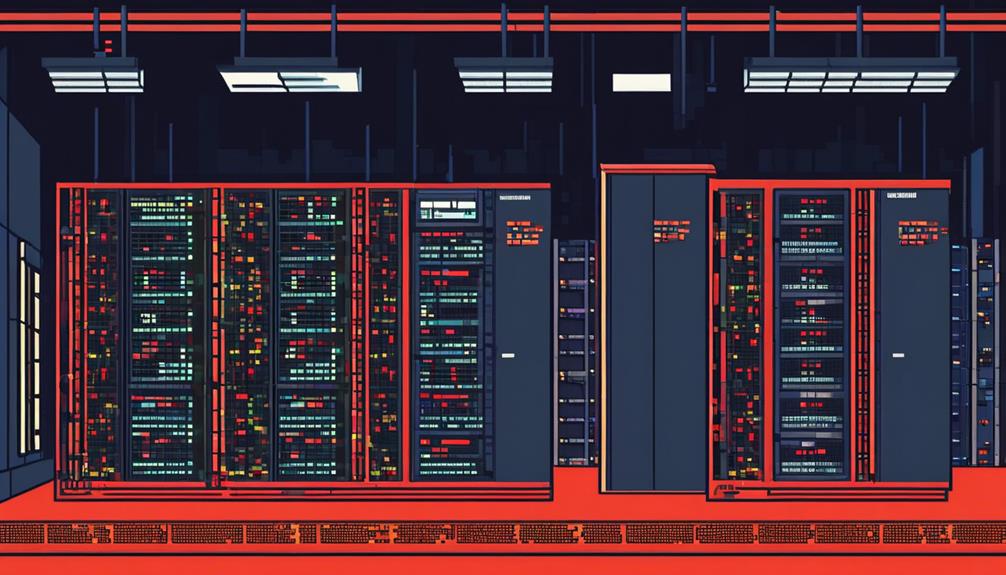
Data center disaster recovery planning is a critical component of a comprehensive business continuity strategy. It involves developing and documenting strategies for mitigating the impact of potential disasters on data center operations and ensuring quick recovery.
This planning process includes identifying potential risks, defining recovery objectives, and implementing appropriate strategies such as backup and replication, failover systems, and off-site data storage. The goal is to ensure the continuity of IT operations and minimize downtime during and after a disaster.
Planning for Disasters
Planning for disasters in data center disaster recovery involves a comprehensive approach to ensure the company's ability to maintain technical operations and swiftly restore functionality in the event of an unplanned incident.
To effectively plan for disasters, organizations should consider the following:
- Disaster recovery plan: Develop a detailed strategy outlining the steps to be taken during a disaster, including the roles and responsibilities of key personnel.
- Recovery Point Objectives (RPO): Determine the acceptable amount of data loss in the event of a disaster. This helps in implementing backup and replication solutions to minimize data loss.
- Regularly back up critical data to secure offsite locations to maintain data integrity.
- Implement real-time replication technologies to minimize data loss and ensure continuous availability of services.
Recovery Strategies
In the realm of data center disaster recovery planning, the focus now shifts towards devising effective recovery strategies that address the crucial aspects of recovery point and recovery time objectives. Recovery strategies play a vital role in ensuring the continuity of business operations and minimizing the impact of a disaster on critical systems. To convey a deeper understanding, let's examine the key components of recovery strategies in a table format:
| Recovery Strategy | Description |
|---|---|
| Backup and Restore | Involves regularly backing up data and applications and restoring them to their original state. |
| Replication | Replicating data and applications in real-time to an alternate site for swift recovery. |
| High Availability | Utilizing redundant infrastructure and failover mechanisms to ensure continuous availability of systems. |
| Cloud-based Recovery | Leveraging cloud services to store and recover data, providing scalability and flexibility. |
These recovery strategies are essential elements of a comprehensive disaster recovery plan. By implementing a well-defined disaster recovery strategy, organizations can safeguard critical systems and ensure business continuity.
Network Disaster Recovery Solutions
Network Disaster Recovery Solutions are crucial for ensuring the restoration of network services and access to backup data and secondary storage sites in the event of a disaster. These solutions play a vital role in maintaining internal and external communication, application access, and data sharing during a crisis. Implementing Network Disaster Recovery Solutions is essential to minimize disruptions to network operations and safeguard critical data.
To evoke an emotional response in the audience, consider the following:
- Peace of mind: Knowing that there is a well-defined network disaster recovery plan in place provides a sense of security and peace of mind to businesses. In the face of a natural disaster or other catastrophic events, organizations can continue to function and serve their customers without major interruptions.
- Protection against data loss: Network Disaster Recovery Solutions involve establishing redundant network infrastructure and backup connectivity options. This ensures continuous service availability and protects against data loss. Businesses can rest assured that their valuable data is safe, even in the face of a disaster.
Regular testing and assessment of Network Disaster Recovery Solutions are crucial. This helps to identify weaknesses and ensure an efficient response and recovery in case of a disaster. By incorporating these solutions into their overall disaster recovery strategy, businesses can maintain their operations and minimize the impact of any network disruptions.
Virtualized Disaster Recovery Strategies
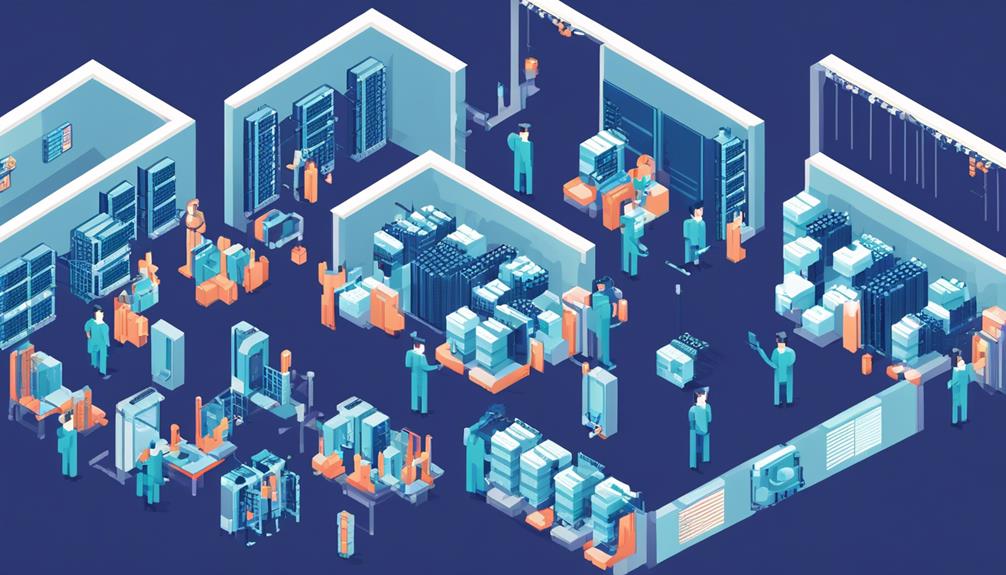
Virtualized disaster recovery strategies leverage virtualization technology to replicate workloads in a secondary location or cloud environment, ensuring flexibility, efficiency, and rapid failover initiation. These strategies enable organizations to enhance their disaster recovery plan by providing faster recovery times and increased availability, minimizing the impact of potential disruptions on business operations.
One of the key benefits of virtualized disaster recovery solutions is their ability to offer a small IT footprint. By using virtual disaster recovery and backup products from various data protection vendors, organizations can optimize resource utilization and reduce hardware costs. This not only saves money but also simplifies the management and maintenance of the disaster recovery infrastructure.
To provide a visual representation of the advantages of virtualized disaster recovery strategies, the following table illustrates three key benefits:
| Benefit | Description |
|---|---|
| Quicker Recovery | Virtualized disaster recovery solutions enable organizations to achieve faster recovery times. |
| Increased Availability | These strategies ensure higher availability, minimizing downtime and ensuring continuity of operations. |
| Cost Reduction | Cloud-based disaster recovery solutions, such as DRaaS, offer cost-effective options, especially for small-to-medium enterprises. |
Implementing virtualized disaster recovery strategies also enhances data center availability and uptime. By replicating workloads in a secondary location or cloud environment, organizations can ensure the continuity of critical operations during unexpected events. This not only safeguards the business operations but also protects the organization's reputation and customer trust.
Disaster Recovery in the Cloud
Disaster recovery in the cloud involves hosting critical systems and data in a cloud environment, enabling organizations to achieve immediate recovery and minimize downtime during disruptions. Cloud-based disaster recovery solutions, such as Disaster Recovery as a Service (DRaaS), have gained popularity due to their cost-effectiveness and flexibility.
Here are two key reasons why disaster recovery in the cloud is an attractive option for organizations:
- Scalability and Agility:
- Cloud services offer the ability to scale resources up or down based on demand, ensuring that the disaster recovery strategy meets the organization's needs at any given time.
- With cloud-based disaster recovery, organizations can easily replicate their entire data center disaster recovery plan in the cloud, eliminating the need for physical infrastructure and reducing costs.
- Enhanced Data Protection and Security:
- Cloud service providers invest heavily in robust security measures, ensuring that critical systems and data are protected from potential threats.
- Disaster recovery in the cloud provides organizations with the assurance that their data is stored in geographically redundant data centers, minimizing the risk of data loss.
To implement a successful disaster recovery strategy in the cloud, organizations must consider several factors. These include defining recovery objectives, evaluating replication strategies, assessing the total cost of ownership, and considering built-in data protection options like those offered by Cloudian. By carefully considering these aspects, organizations can ensure that their disaster recovery in the cloud is efficient, reliable, and aligned with their business needs.
Disaster Recovery as a Service (Draas)
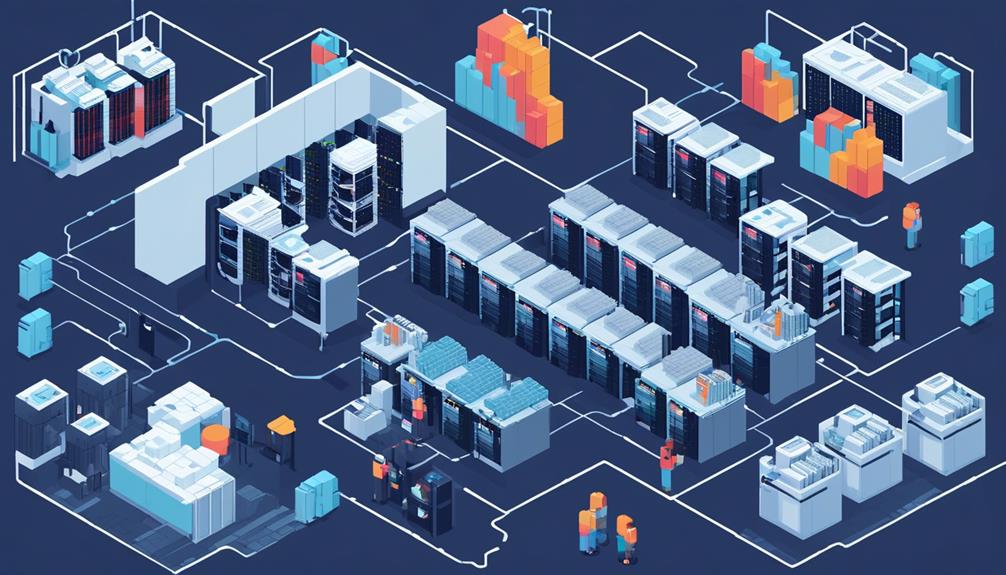
Disaster Recovery as a Service (DRaaS) offers several benefits to organizations.
Firstly, it reduces the upfront costs associated with traditional disaster recovery solutions, making it more accessible for small-to-medium organizations.
Secondly, DRaaS providers handle the replication and hosting of servers, ensuring that the disaster recovery plan is implemented according to the agreed service-level agreement.
Implementing DRaaS helps organizations ensure business continuity by quickly restoring affected systems or failing over to backup systems after unexpected events.
Benefits of Draas
DRaaS, or Disaster Recovery as a Service, offers organizations a cost-effective and scalable solution for ensuring minimal disruption to business operations in the event of a disaster.
Here are some key benefits of DRaaS:
- Cost-effective: DRaaS reduces upfront costs by eliminating the need for organizations to invest in their own disaster recovery infrastructure. Instead, they can leverage third-party infrastructure and pay for the services they need, making it an attractive option for small-to-medium organizations with limited budgets.
- Quick restoration: DRaaS enables quick data and system restoration, helping organizations resume normal operations promptly. This reduces downtime and minimizes the financial and reputational impact of a disaster.
- Flexibility: DRaaS offers flexibility in hosting virtual and physical servers on third-party infrastructure, allowing organizations to adapt their disaster recovery strategy based on their changing needs. Service-level agreements ensure that the recovery process is managed efficiently.
Implementing Draas
To seamlessly move from discussing the benefits of DRaaS, organizations can now explore the crucial steps involved in implementing Disaster Recovery as a Service (Draas) to ensure efficient and cost-effective business continuity.
Implementing Draas requires a comprehensive risk assessment of the data center facility to identify potential vulnerabilities and potential disaster scenarios. This assessment helps in formulating a robust disaster recovery plan tailored to the specific needs of the organization.
The next step involves selecting a suitable DRaaS provider that can meet the recovery objectives and provide the required replication strategies. It is essential to involve the relevant disaster recovery team members in the decision-making process, as they possess the expertise to evaluate the service-level agreements and ensure their alignment with business requirements.
Choosing the Right Disaster Recovery Software
When selecting disaster recovery software, it is crucial to align your recovery objectives, such as Recovery Time Objective (RTO) and Recovery Point Objective (RPO), with the capabilities of the software. This ensures that your data center can recover and resume operations within the desired timeframe and with minimal data loss.
Here are some key considerations to keep in mind when choosing the right disaster recovery software:
- Replication strategy: Evaluate the appropriate replication strategy for your application. Consider factors such as distance, connectivity, and environmental conditions. Determine whether synchronous or asynchronous replication is more suitable for your needs.
- Total cost of ownership (TCO): It is important to evaluate the TCO of the disaster recovery software. This includes upfront costs, ongoing maintenance, and operational costs. Consider the long-term affordability and scalability of the solution.
When considering disaster recovery software for your data center, it is important to choose a solution that aligns with your business's critical processes and resources. The software should support the successful recovery of your applications and data.
Cloudian, for example, offers built-in data protection solutions for disaster recovery. Their solution includes low-cost disk-based storage technology and integrated data management tools. This allows for efficient and cost-effective disaster recovery solutions.
Essential Steps for Data Center Disaster Recovery
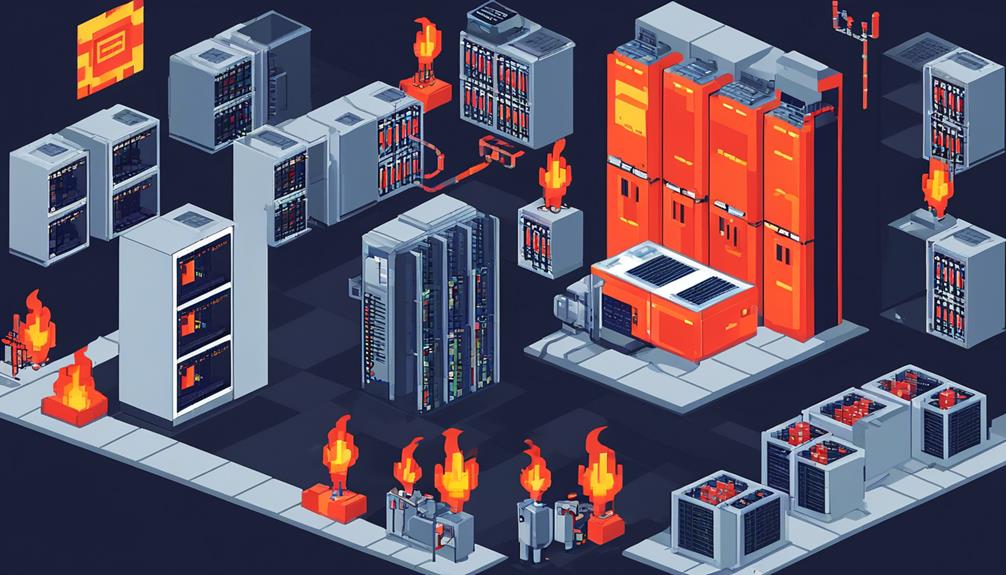
Conducting a comprehensive Business Impact Analysis (BIA) is an essential first step in developing a successful data center disaster recovery plan. A BIA helps identify critical processes and resources that need to be prioritized for recovery in the event of a disaster. By understanding the potential impact of a disruption on the business, organizations can better allocate resources and prioritize recovery efforts.
Once the BIA is complete, the next step is to define and align the Recovery Time Objective (RTO) and Recovery Point Objective (RPO) based on business needs and priorities. The RTO specifies the maximum acceptable downtime for each critical process, while the RPO determines the acceptable amount of data loss. These objectives provide a framework for designing an effective disaster recovery strategy.
It is crucial to involve key business leaders in creating and testing the disaster recovery plan. This includes IT infrastructure experts who can assess the technical requirements and recommend suitable solutions. Furthermore, problem-solving skills are essential to identify vulnerabilities and develop appropriate mitigation strategies.
Assessing and implementing disaster recovery solutions tailored to the specific data center facility is another critical step. Organizations can choose from on-premise, virtualized, or cloud-based solutions based on their requirements and budget. It is important to ensure that the chosen solutions provide the necessary redundancy, scalability, and security to support the business continuity needs.
Regularly testing and updating the disaster recovery plan is essential to ensure its effectiveness. Tabletop exercises can simulate various disaster scenarios, allowing organizations to identify gaps and refine their response strategies. Considering potential risks and vulnerabilities helps in continuously improving the disaster recovery plan and better preparing the data center for any unforeseen events.
Building an Effective Disaster Recovery Strategy
An effective disaster recovery strategy is crucial for ensuring the continuity of critical processes and resources in the event of a data center disaster. To build an effective disaster recovery strategy for your data center, there are several key steps you should follow:
- Determine recovery point and recovery time objectives (RPO and RTO) to guide your disaster recovery plan. RPO defines the maximum amount of data that can be lost without impacting operations, while RTO specifies the maximum acceptable downtime.
- Involve key business leaders and IT experts in the disaster recovery planning process. This ensures that the strategy aligns with business objectives and incorporates technical expertise.
- By involving key business leaders, you can gain their support and ensure that the disaster recovery plan aligns with the organization's goals and priorities.
- Engaging IT experts allows you to leverage their knowledge of the data center infrastructure and systems to develop a comprehensive and effective plan.
- Test the disaster recovery plan through comprehensive tabletop exercises. These exercises simulate disaster scenarios and test the effectiveness of the recovery processes and procedures.
- Assess and implement disaster recovery solutions tailored to your data center facility. This involves evaluating the available solutions in the market and selecting the ones that best meet your specific requirements.
- Disaster recovery solutions may include backup and replication technologies, data deduplication, virtualization, and cloud-based services.
- Tailoring the solutions to your data center facility ensures that they are optimized for your infrastructure and can effectively mitigate the risks associated with potential disasters.
- Prioritize employee safety and consider advanced monitoring solutions for disaster preparedness. Ensuring the safety of your employees during a disaster is of utmost importance. Advanced monitoring solutions, such as environmental sensors and video surveillance systems, can provide real-time information about the status of the data center facility and help prevent or mitigate potential disasters.
Frequently Asked Questions
What Is Disaster Recovery for Datacenter?
Disaster recovery for data centers is the process of implementing strategies and procedures to ensure the continuity and resilience of a data center in the face of potential disasters.
It involves meticulous planning, including setting recovery point and recovery time objectives, coordinating with business area continuity planning, and implementing security measures to protect against risks such as data theft and natural disasters.
Disaster recovery planning for data centers is of utmost importance to maintain regular business processes and safeguard critical data.
What Are the Ways to Prepare Your Data Center for Disaster?
To prepare your data center for disaster, it is essential to focus on disaster recovery planning essentials. These include conducting a business impact analysis and defining recovery objectives.
Additionally, ensuring the importance of backup and replication cannot be overstated. Implementing data center redundancy is also crucial to enhance availability and uptime.
Lastly, regular testing and updating of disaster recovery strategies are vital to uncover any weaknesses and ensure the effectiveness of the plan.
What Are the 3 Main Methods for Recovering Systems?
The three main methods for recovering systems are:
- Cloud-based recovery options: Cloud-based recovery options, such as Disaster Recovery as a Service (DRaaS), provide enterprise-grade recovery capabilities and reduce upfront costs.
- Virtual machine replication: Virtual machine replication involves replicating workloads in a secondary location or cloud environment using virtualization.
- Backup and restore techniques: Backup and restore techniques ensure that critical systems and data can be restored in the event of a disaster.
These methods, combined with high availability solutions, help to ensure business continuity and minimize the impact of unexpected events.
How Do I Recover Data Center?
Recovering a data center requires a comprehensive approach that encompasses several key concepts. These include data center backup strategies, the importance of data center redundancy, data center recovery best practices, and key considerations for data center recovery plans.
It is crucial to have a well-defined recovery plan in place. This plan should include regular backups, redundant systems, and off-site storage. Regular backups ensure that data is protected and can be easily restored if needed. Redundant systems provide additional layers of protection by ensuring that if one system fails, another can take its place. Off-site storage ensures that data is not only backed up but also stored in a separate location, reducing the risk of data loss in the event of a disaster.
Implementing proper monitoring and maintenance procedures is also essential for a successful data center recovery. Regular monitoring allows for the early detection of potential issues and helps prevent them from becoming larger problems. Maintenance procedures, such as regular equipment inspections and updates, help ensure that the data center is operating at optimal levels and reduces the risk of system failures.
Conducting regular risk assessments is another important aspect of data center recovery. This involves identifying potential risks and vulnerabilities and developing strategies to mitigate them. By understanding and addressing these risks, data centers can better prepare for and recover from potential disasters.
Finally, testing the recovery plan is crucial to ensure its effectiveness. Regularly testing the plan helps identify any weaknesses or gaps in the recovery process and allows for adjustments to be made as needed. This testing should include both simulated disasters and real-world scenarios to ensure that the plan can handle a variety of situations.
